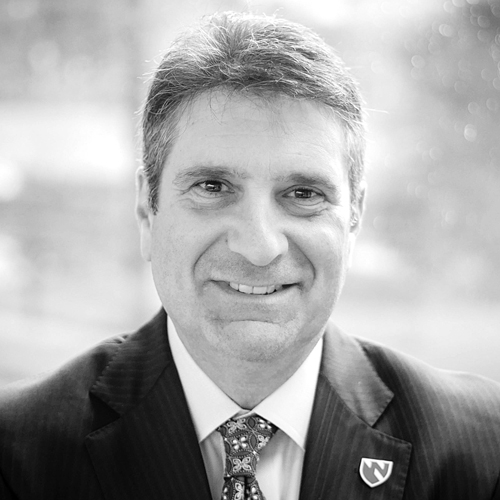John O’Hearn likes to say that he’s been in healthcare since he was a toddler. His father was an internist, and his mother was a social worker who served on the board for Medical Center Health System (MCHS), based in Odessa, Texas. “I’ve been in or around healthcare most of my life,” O’Hearn, the vice president of strategy and development for MCHS, says.
In O’Hearn’s lifetime, healthcare has seen some dramatic shifts. After a spell in pharmaceutical sales, he returned to working for hospitals with MCHS in 2011—right on the heels of the seismic changes created by the Affordable Care Act. As Medicaid is a poor payer in terms of reimbursement (O’Hearn says that MCHS gets about 40 cents on the dollar), MCHS and other hospitals were working at a deficit from the beginning. Recognizing this, the government stepped in and created the Upper Payment Limit (UPL) program to make up the deficit, and everyone was content. But then, in 2012, Texas adopted managed care for Medicaid across the state, which made hospitals suddenly ineligible for the UPL and sent them back to the deficit.
“Every CEO and CFO ran for the hills because funding was crucial to our bottom line,” O’Hearn recalls. “We all counted on this funding.” The state had to circle the wagons and figure out how to recuperate the lost money back into Texas. In one of the rare occasions where one saw Texas follow California, the state applied for a waiver through the Social Security Act that California had been using.
The Medicaid 1115 Waiver is basically a fund that pays for uncompensated care, along with a Delivery System Reform Incentive Payment (DSRIP), a progressive initiative that encourages hospitals to find unique projects that increase access to care, improve infrastructure, and provide better quality care and better access to that care at a lower cost. Texas not only replaced the UPL funding, which was about $15 billion, but was fortunate to increase the funding pool to $29 billion with the introduction of the DSRIP pool.
What happened in Texas was distinct from what had occurred in California, in which a total of twenty-one public hospitals participated. In Texas, there are more than 300 providers involved. This waiver opened up funds to mental health authorities, county health departments, and academic physician practices, among others. It represented a sea change from the UPL, leading to a fundamental transformation of care rather than just making up a loss. There are currently more than 1,400 statewide projects designed to increase access and decrease cost.
“The UPL was kind of an accounting function. This is true system transformation,” O’Hearn says. “Because of the structure of the regional healthcare partnership (RHP), it brought us all to the table to discuss what the region’s needs really are.”
The program reorganizes the state into regions (MCHS is in region fourteen, thus RHP 14) that are similar in scope and size. It also assembles a group of providers. In RHP 14, MCHS was made the anchor institution, and O’Hearn took on the role of program director. He also serves as a liaison among all the providers in the region by coordinating reporting and sharing best practices. RHP 14 has fifty-five projects and nearly $270 million in incentive payments it can attain.
“If something didn’t make money before, it was hard to convince people to dive into it. Now we’re incentivized to create programs and services that meet a community need.”
The waiver allows MCHS to serve uninsured patients (20 percent of all patients in Texas) more creatively and broadly in ways that reduce the financial burden on the system. Prior to this waiver, MCHS only had one low-
income family clinic, which was often overrun. The waiver has now allowed MCHS to greatly expand care to the population by opening a second clinic. When an uninsured patient walks into the hospital, he or she is assigned a navigator who assesses immediate social and physical needs, begins the process of assigning the patient a primary care physician, and works on providing the patient with low-cost medications, sometimes even a year’s worth of drugs for free.
“This doesn’t stop during the visit,” he says. “It could be a ninety-day relationship we form with these patients, trying to get them on the right course.” O’Hearn adds that since the waiver was instituted, he’s seen incredible changes in the system, unfolding each day. He also directly attributes 70,000 primary care visits to the waiver across the region. Texas recently completed the fifth year of the waiver and is now working underneath a fifteen-month extension through December 2017 until an agreement can be reached between the Texas Health and Human Services Commission and Centers for Medicare & Medicaid Services (CMS) on the structure and design of a new waiver.
In the periphery of that discussion will be the debate surrounding Medicaid expansion in Texas, which CMS is pushing for, but that idea has been a non-starter in the Republican-led Texas legislature. “The worry amongst Texas hospitals is that we will be between a rock and a hard place,” he says. “Both sides are pretty consistent in their views, and unfortunately, the only people affected are the patients that have been impacted by these programs. Without Medicaid expansion or a continuation in waiver funding, many of these patients and the facilities that serve them will be severely lacking in funding.”
O’Hearn adds that the waiver offered the opportunity to try things that they’d wanted to do for a long time. “We had all these great ideas that were sitting in the regional hospitals,” he says. “If something didn’t make money before, it was hard to convince people to dive into it. Now we’re incentivized to create programs and services that meet a community need but aren’t reimbursed. The amount of lives impacted has been remarkable.”

